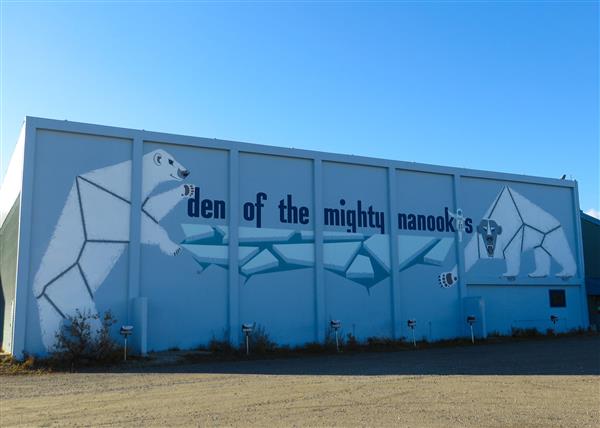How To Build a Digital Curriculum for a Remote District
In the remote coastal city of Nome, Alaska, internet is slow and costs more than $300 per month yet students remain connected

Nome, Alaska, is more than 500 miles north of Anchorage, nestled on the coast of the Bering Sea along the Seward Peninsula. Though not an island, no roads or railroads connect the community to the rest of Alaska.
“You have to fly or float to get here,” says Jim Shreve, Nome Public Schools’ Director of Technology.
Nome’s remoteness protected the city of 3,850 from Covid-19 at first—with no local cases last spring and into early fall, Nome schools were not forced to go online-only until there was a flare up in November. At that point, teaching online became a challenge.
About 40 percent of Nome’s 700 students don’t have internet access. Even in households in which there is internet, speed is limited and there are often monthly download limits.
“The cost point of internet in remote Alaska is crazy,” Shreve says. “I pay $300 per month for a satellite connection that's 10 megabits down, one megabit up, but unlimited data.”
Faster plans can cost upward of $400 per month, and even the Nome school system itself has limited internet speed. “We're at a 75 megabits per second connection that we share with three schools,” Shreve says. (By comparison, the average U.S. internet speed is about 135 megabits download speed and 52 megabits upload speed.) With 700 students and nearly 120 staff members, it doesn’t take long for that connection to become bogged down.
So when the pandemic began, Shreve knew he needed to work to upgrade the school’s digital connectivity in a way that would allow for asynchronous teaching and hopefully strengthen the district’s digital curriculum post-pandemic. The way that was accomplished can serve as a playbook for other remote school systems.
Tech & Learning Newsletter
Tools and ideas to transform education. Sign up below.
The Right Content
Prior to the spring of 2020, Nome Schools had a subscription with a digital education company that provided the district with videos and other educational content. But the resources were limited and rarely updated. Shreve says there was video content that seemed to date back to the 1980s.
With an increased emphasis on digital learning clearly coming as a result of the pandemic, Shreve and other Nome educators knew an upgrade was needed. In addition to more timely content, Shreve wanted a service with strong Career and Technical Education (CTE) and STEM resources. A third, and perhaps most important requirement, was that the video lessons and other content needed to be downloadable so the students could work on it offline at their homes.
Nome eventually went with Discovery Education Experience, a K-12 learning platform that offers a vast array of standards-aligned content and digital lessons. Teachers have been able to tailor the lessons offered to their classes effectively, providing students with a top-tier digital education.
Size (and Speed) Matters
Shreve emphasizes how important the ability to download content is for remote schools. His advice for other districts with similar internet connectivity challenges is to pay attention to both download capabilities and overall file size of videos.
For example, their current videos are compressed into small file sizes so they can be saved to thumb drives and sent home with students. The smaller video files use less of the school system’s limited bandwidth, making it easier to stream for in-person classes. “We were able to get really good results streaming from five or six different devices across the different classrooms,” Shreve says.
Community Flexibility
For grades 5 and above, Nome is a 1-to-1 district, with Chromebooks or equivalent devices allowed to be taken home so students can work with digital resources offline. (Chromebook settings are adjusted for this). The district also provides printout paper packet alternatives when necessary.
Shreve hopes that with the district’s new content partnership more students will take advantage of the digital curriculum and that the district will be able to close some of the educational divide between the internet haves and have-nots. “It's kind of tough if we have a family who is like, ‘Oh yeah, we have unlimited internet, so we can do all of the Google Meets and all the online content and everything.’ And then possibly the family next door to them doesn't have internet because they can't afford it,” Shreve says. “So now those kids are getting just a paper packet. It's not the same level of education.”
The district’s goal is for the combined use of take-home devices and high-quality downloadable content to help overcome that disparity. “We are trying to strive for equity in that as much as we can,” Shreve says.
Erik Ofgang is a Tech & Learning contributor. A journalist, author and educator, his work has appeared in The New York Times, the Washington Post, the Smithsonian, The Atlantic, and Associated Press. He currently teaches at Western Connecticut State University’s MFA program. While a staff writer at Connecticut Magazine he won a Society of Professional Journalism Award for his education reporting. He is interested in how humans learn and how technology can make that more effective.

